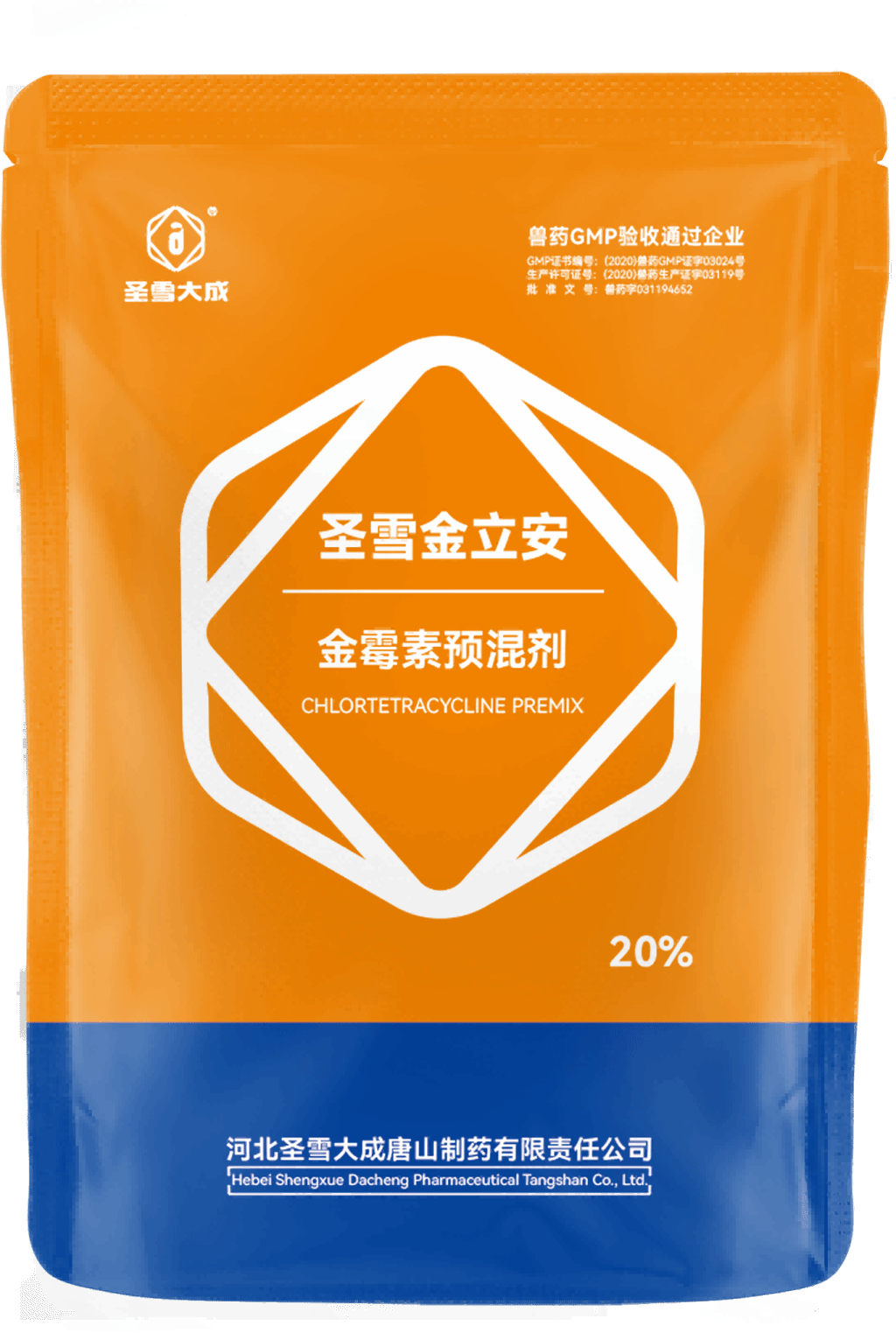Tel:0086 18231198596

News
Assessing the potential impact of Chlortetracycline Premix.
TIME:2024-06-05
However, widespread use of antibiotics like CTC has raised concerns about the emergence of antimicrobial resistance (AMR) in bacterial pathogens, posing risks to animal and human health. In response, regulatory agencies have implemented measures to promote judicious use of antibiotics in animal agriculture, including restrictions on the use of medically important antibiotics like CTC. As a result, livestock producers are faced with the challenge of transitioning away from CTC premix while maintaining animal health and productivity.
Impact on Animal Health:
The withdrawal of CTC premix from animal feed may have several implications for animal health:
Increased Disease Risk: Without the prophylactic and therapeutic effects of CTC, livestock may be more susceptible to bacterial infections such as respiratory diseases, enteric infections, and mastitis. This could lead to higher morbidity and mortality rates among animals, particularly in intensive production systems where stress and crowding facilitate disease transmission.
Loss of Growth Promotional Effects: CTC has been shown to promote growth and improve feed efficiency in livestock, leading to faster weight gain and lower production costs. Withdrawal of CTC premix may result in reduced growth rates and poorer performance, impacting the economic viability of animal production operations.
Challenges in Disease Control: Alternative strategies for disease prevention and control, such as vaccination, biosecurity measures, and dietary modifications, may not fully compensate for the loss of CTC's antimicrobial effects. Livestock producers may face challenges in implementing these strategies effectively, especially in resource-limited or high-density production environments.
Impact on Productivity:
The withdrawal of CTC premix could also affect productivity in animal agriculture:
Reduced Feed Efficiency: CTC has been widely used to improve feed efficiency by suppressing subclinical infections and promoting nutrient utilization in livestock. Without CTC, animals may require more feed to achieve the same level of growth, resulting in higher feed costs and reduced profitability for producers.
Extended Production Cycles: Slower growth rates and increased susceptibility to diseases may prolong production cycles for livestock, delaying the time to market and reducing overall productivity. This could have ripple effects on supply chains, market dynamics, and consumer prices for animal products.
Market Competitiveness: Livestock producers operating in regions where CTC use is restricted or phased out may face challenges in competing with producers from areas where CTC is still permitted. Price differentials and variations in production costs could impact market competitiveness and profitability for affected producers.
Public Health Considerations:
In addition to its impact on animal health and productivity, the withdrawal of CTC premix has implications for public health:
Reduced Antibiotic Residues: Withdrawal of CTC premix may lead to lower levels of antibiotic residues in animal products, reducing the risk of AMR development in human pathogens and mitigating concerns about antibiotic residues in the food supply.
Human Health Risks: AMR is a global public health threat, with implications for the treatment of infectious diseases in humans. By reducing the use of medically important antibiotics like CTC in animal agriculture, there is potential to mitigate AMR risks and preserve the effectiveness of antibiotics for human medicine.
Consumer Perception: Public awareness of AMR and antibiotic use in food production has grown in recent years, influencing consumer preferences and purchasing decisions. Withdrawal of CTC premix may align with consumer expectations for sustainable and responsible food production practices, enhancing consumer trust and confidence in animal products.
Alternative Strategies:
To mitigate the potential impact of CTC premix withdrawal, livestock producers can explore alternative strategies for disease prevention and control:
Vaccination Programs: Vaccination is a proven strategy for preventing infectious diseases in livestock and reducing the need for antimicrobial treatments. Implementing effective vaccination programs can help minimize disease outbreaks and maintain animal health in the absence of CTC premix.
Improved Biosecurity Practices: Enhancing biosecurity measures on farms can reduce the risk of disease introduction and transmission, thereby minimizing the reliance on antimicrobials for disease control. Measures such as strict hygiene protocols, animal isolation, and visitor management can help prevent disease spread within and between livestock facilities.
Nutritional Interventions: Optimizing nutrition through balanced diets and supplementation can support immune function and resilience in livestock, reducing their susceptibility to infections. Dietary additives such as probiotics, prebiotics, and immune stimulants may help enhance gut health and microbial balance, promoting overall animal well-being.
Selective Breeding: Selective breeding for disease resistance and resilience traits can contribute to long-term improvements in animal health and productivity. Breeding programs aimed at developing more disease-resistant livestock breeds or genetic lines may reduce the reliance on antimicrobials for disease management.
Integrated Management Approaches: Combining multiple strategies, such as vaccination, biosecurity, nutrition, and genetics, into integrated disease management programs can provide comprehensive solutions for maintaining animal health and productivity without relying solely on antimicrobial treatments.
Conclusion:
The withdrawal of Chlortetracycline (CTC) premix from animal feed presents both challenges and opportunities for livestock producers, with implications for animal health, productivity, and public health. While the loss of CTC may increase the risk of disease and reduce productivity in the short term, alternative strategies such as vaccination, biosecurity, nutrition, and selective breeding offer promising avenues for maintaining animal health and minimizing the need for antimicrobial treatments.
By adopting a multifaceted approach to disease prevention and control, livestock producers can mitigate the potential impact of CTC premix withdrawal while promoting sustainable and responsible practices in animal agriculture. Continued research, collaboration, and innovation are essential for developing effective solutions that prioritize animal welfare, public health, and environmental sustainability in the post-CTC era of animal production.

 CONTACT
CONTACT




